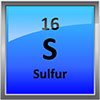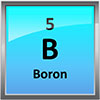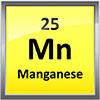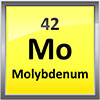Chemistry
to one that is alive, efficient and resilient to stress. We have implemented the ABCs of Soil Health to assist with the process of regaining soil function.
Each step is essential in restoring the soil’s ability to grow healthy crops.
Before trying to determine what mineral and nutrients we need to use to fertilize our plants, we first must understand the make-up of a plant.
- Most plants are made up of 80% water
- Of the remaining dry matter, 97% is:
- Carbon 47%
- Oxygen 43%
- Hydrogen 4%
- Nitrogen 3%
These minerals are available in the environment in large quantities. Our job is to create a soil environment that will sequester and cycle these nutrients.
- The remaining 3%:
- Calcium
- Phosphate
- Potassium
- Magnesium
- Sulfur
- Trace Minerals
These minerals are usually contained the soil. Our job is to create availability of these minerals to the plant by supporting the soil microbes, and creating structured soil.
We take a different approach to the fertility needs (based on the Biological Theory of Ionization) of the soil and the crop being grown. Minerals are categorized based on the rotation of the ion and the effect it has on the growing plant. The energy released from the interaction of the anions and the cations, the anions with other anions as well as the cations with other cations is what allows the plant to grow. Providing the best combinations of cations and anions to match the development of the growing plant is the goal of this approach.
Anionic minerals promote the growth of the plant vegetatively. Stems, leaves and roots will grow and develop when the plant is growing in this stage. Minerals that are considered anionic are Calcium, Potassium and Chloride. These minerals have a counterclockwise spin and measure from 0-499 units on the Millhouse scale of energy.
Cationic minerals are responsible for the reproductive growth of a plant. This group includes all the minerals not mentioned above. (With the exception of Oxygen, Hydrogen, Nitrogen and Helium, they are described below.) Milhouse unit measurements range from 500-999 and they are considered to have a clockwise spin.
Oxygen, Hydrogen, Nitrogen and Helium are considered to be categorized slightly different. These minerals can be either cationic or anionic depending on the environment that they are found. They are believed to follow the path of least resistance and convert to anionic or cationic as required.
Energy levels (ERGS) are very important when the growth of a plant is being considered.
The plant's main job is to photosynthesize, creating sugar. A plant with increased sugar levels will result in increased energy but also increased nutrition and nutrient density for the consumer. Nutrient density should be the chief goal in the production of food.
All minerals found on the periodic chart have unique characteristics or personalities. These characteristics are found in all environments and don't change from the soil to the plant to the animal. For example, if an electrolyte mineral causes water retention in the human body, it will also retain water in the plants and the soil as well. Gaining a basic understanding of what each element does helps with understanding why it should or shouldn't be used in plant health.
Minerals needed for plant growth and production:

















